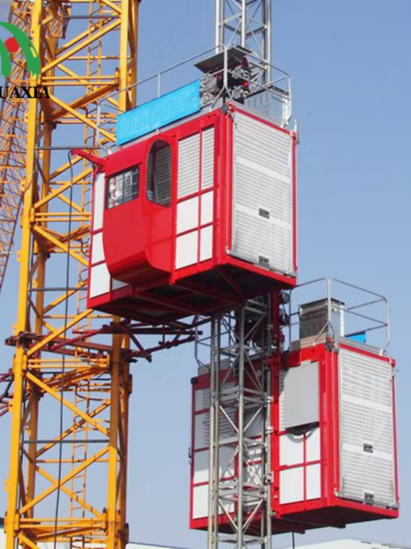Hoist Elevator Lift
A hoist elevator lift is a crucial system for vertical transportation in buildings and construction sites. It facilitates the movement of people, goods, and materials efficiently. Designed with advanced mechanisms, it ensures smooth operation, safety, and reliability, making it essential for residential, commercial, and industrial applications requiring efficient lifting solutions.
Product Description
Hoist Elevator Lift
A hoist elevator lift is an essential tool for vertical transportation. It efficiently moves people, goods, or construction materials between different levels of a building or worksite. These elevators are widely used in construction, manufacturing, warehouses, and high-rise buildings. Built with high-strength materials and advanced mechanical systems, they ensure smooth and safe lifting. Some hoist lifts are temporary, such as those on construction sites, while others are permanent fixtures in buildings.
Functionality and Mechanism
A hoist elevator operates using a system of motors, pulleys, guide rails, and steel cables or hydraulic mechanisms. In most modern designs, an electric motor powers the lifting mechanism, allowing smooth movement along guide rails. Many systems include a counterweight to balance the load, which reduces energy use and mechanical stress. Additionally, advanced computerized systems monitor performance, detect faults, and enhance safety with automatic brakes and emergency stop features.
Types of Hoist Elevators
Different types of hoist elevators serve distinct functions.
- Construction hoists transport workers and materials on high-rise projects. These lifts attach to the exterior of buildings and have a high load capacity.
- Passenger hoists, commonly found in commercial and residential buildings, focus on safety and comfort with enclosed cabins and noise-reduction technology.
- Freight hoists handle heavy loads in warehouses and factories, reducing manual labor.
- Service hoists, used in hotels, hospitals, and restaurants, transport supplies, food, and medical equipment efficiently.
Safety and Reliability
Safety is a top priority in hoist elevator design. Modern models include emergency braking systems, overload sensors, and automatic door interlocks. Speed regulation mechanisms prevent sudden acceleration, reducing risks. In construction hoists, safety cages, and barriers protect workers and materials during transport. Regular maintenance and safety inspections ensure long-term reliability and compliance with industry standards.
Applications in Different Industries
Hoist elevators serve multiple industries.
- Construction: They transport workers, tools, and materials efficiently, improving project timelines.
- Commercial Buildings: Passenger hoists enhance accessibility and comfort.
- Industrial Facilities: Freight hoists streamline the transport of heavy goods and equipment.
- Hospitals: Specialized hoists ensure smooth movement of patients, staff, and medical supplies.













Reviews
There are no reviews yet.